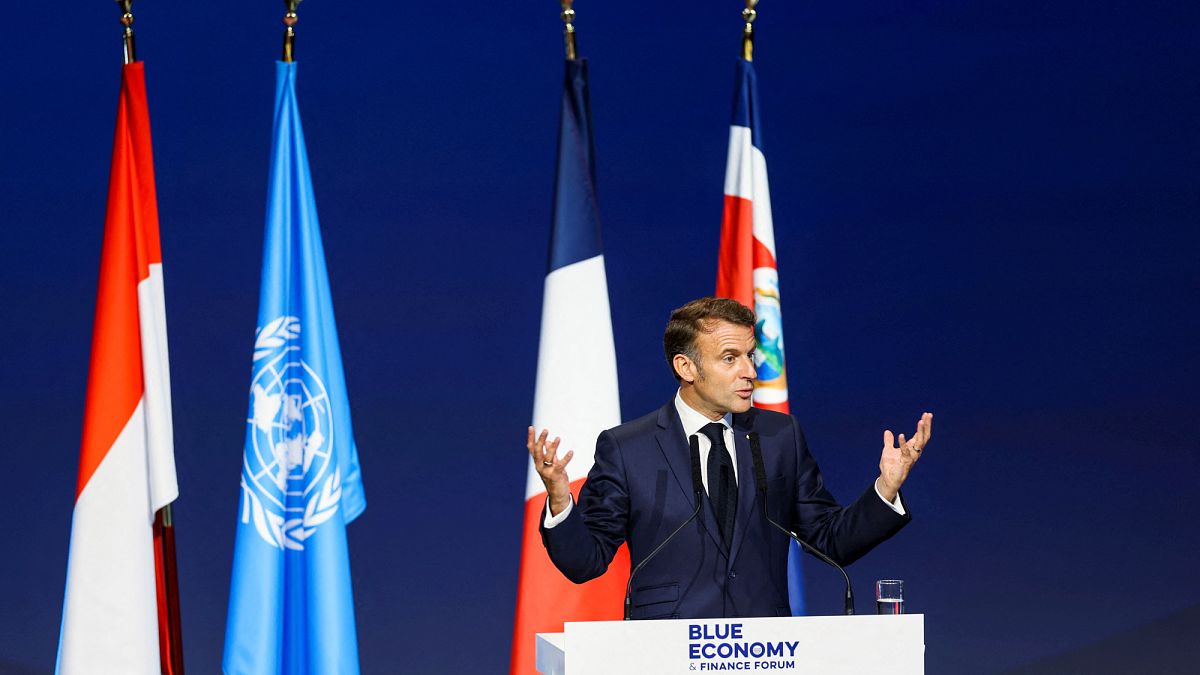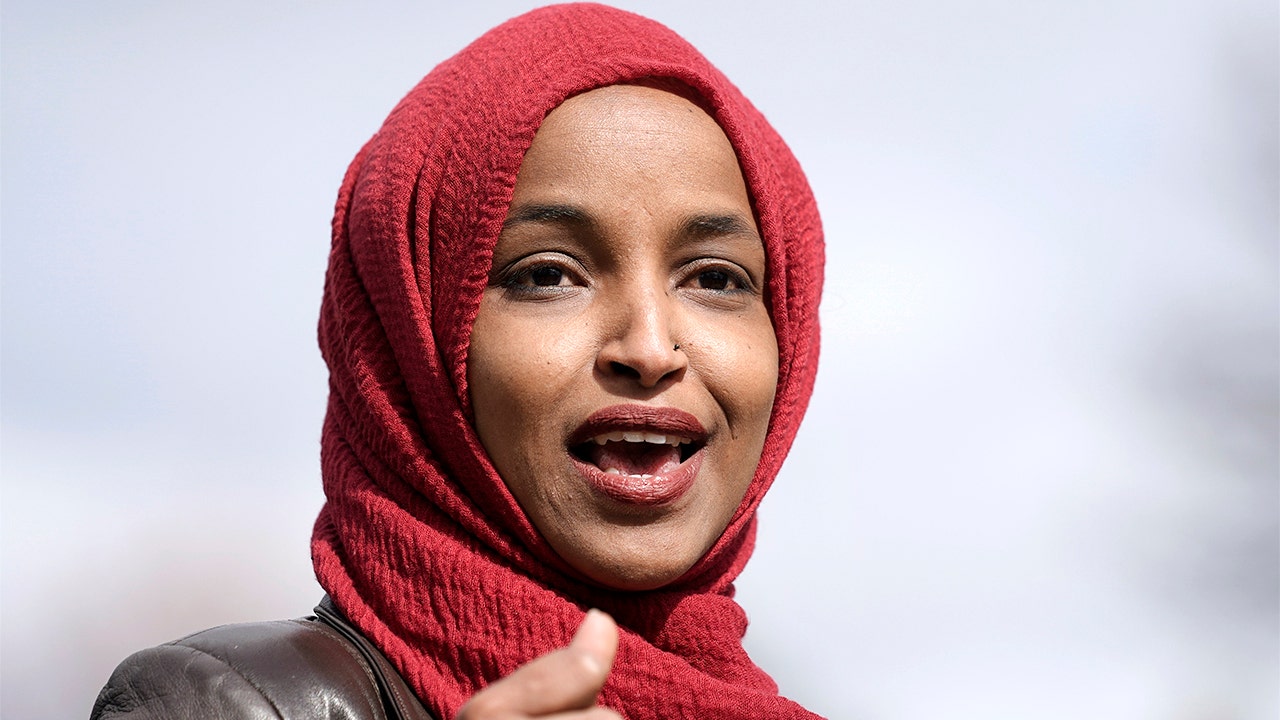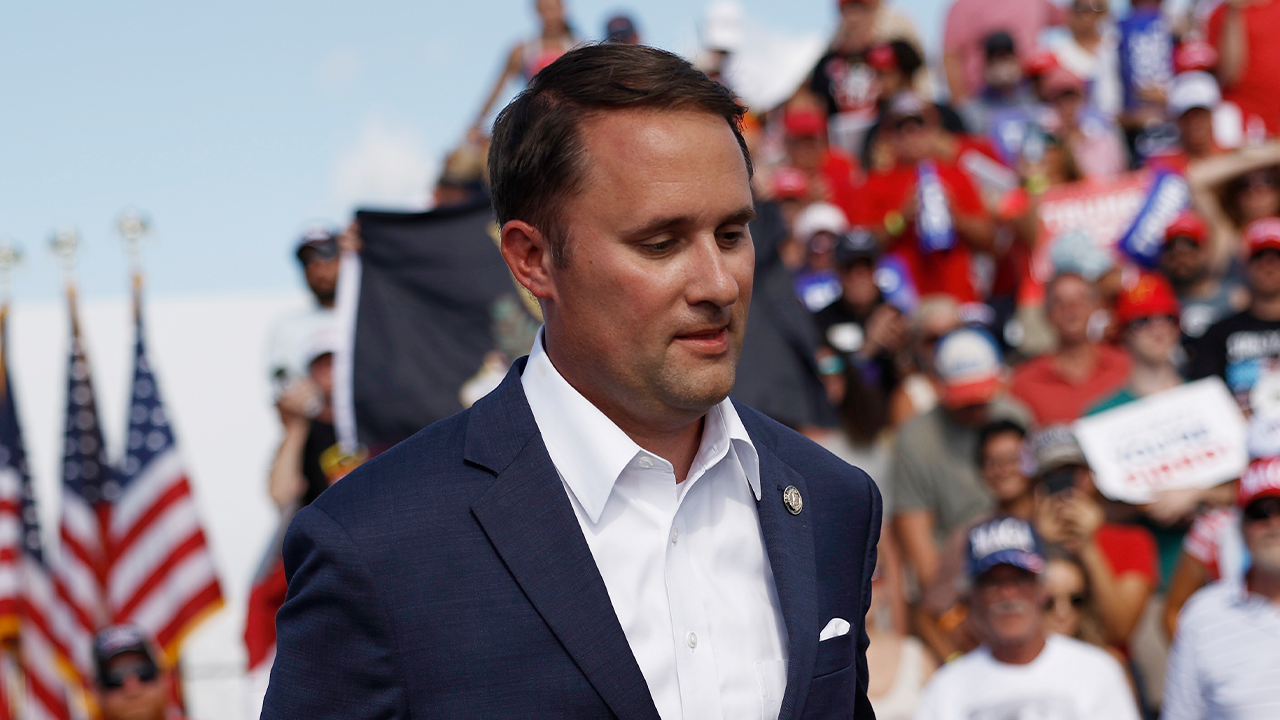Finance
The Key To Making Good Financial Decisions—Connecting With Your ‘Future Self’

Have you ever received a piece of news that instantly transported you into the future and changed the way you saw everything in the present?
In mid-March, I was checking in with my wife by phone from a hotel room in Atlanta following the first completed day of my new job, and I could tell something was off. After some coaxing, she acknowledged she needed to share something, but she wanted to wait until I got home. She wanted me to keep a clear head for the new gig. Two more days. But you know I couldn’t wait for that.
Among a couple of outlandish guesses to rule out the ridiculous, I landed on the announcement we presumed was a medical impossibility—my wife was pregnant. That explained the nagging nausea over the past month. And the four positive pregnancy tests that afternoon.
ADVERTISEMENT
To offer a touch more perspective, in addition to operating under the assumption that pregnancy wasn’t possible, my wife is 43 and I’m 47. We’d just been married five months prior. We have two amazing sons from my first marriage, ages 19 and 17, and were a year away from a blissful early empty nest hood. We weren’t planning on having any more children. Now, we’d begun an 18-year reset.
But after I talked my wife down from the initial shock—even fear—and we began to see this unexpected addition as the miraculous blessing that she is, I hung up the phone, closed my eyes, took an exaggerated inhale followed by a prodigious exhale, and a very clear vision appeared:
I saw myself 18 years from now at a high school graduation.
The Class of 2041
getty
ADVERTISEMENT
It was a visceral vision beyond mere imagination. I could see myself there, taking pictures, having pictures taken, shaking hands, hugging, smiling, proud, happy, content.
That vision moved me to action. The very next day, I did the following:
- Increased my 401(k) contribution.
- Upgraded my health insurance.
- Reached out to an attorney to accelerate the update to my estate planning documents.
- Inquired about purchasing additional life insurance.
- Ran a calculation to determine how much I’d invest monthly in a new 529 education savings plan.
To be clear, four of these five tasks were already to-dos based on my present reality, having just been married — and the fact that I’m a financial planner, for goodness’ sake. Yet, what that present reality lacked was such a vivid future vision of me and my family—a vision I felt so connected to that it inspired me to act immediately on behalf of my family’s and my future self.
ADVERTISEMENT
Then, just days later, I had the serendipitous opportunity to talk to one of the world’s foremost experts on how our future perspective impacts our present, Hal Hershfield, a professor of marketing, behavioral decision-making, and psychology at UCLA, and the author of the new book, Your Future Self: How to Make Tomorrow Better Today.
I felt like I’d just experienced what Hershfield was writing about, so I asked him. “Exactly in line,” he told me. I can’t recommend the book more highly, especially because the author’s exceptional use of narrative gives this behavioral science volume a surprising page-turner quality. Still, I’ll offer here four observations that I discussed with Hershfield designed to help us apply his wisdom and research in pursuit of the most effective financial planning:
1. One of the reasons we don’t save enough for the future is that we see our future self as a different person.
“We see our future selves somewhat as separate people,” Hershfield said. He addresses this both from a psychological and philosophical perspective in the book and raises a fascinating question for us to consider: Are we really the “same” people over time?
ADVERTISEMENT
The answer that I found the most compelling was an allusion that positions each of us as a yacht. As we journey through the waterways of time, we inevitably have to replace many different parts. Over the course of, say, 40 years, much of the boat has been replaced—piece by piece. But we’re still the same craft, I mean person, right?
2. A better connection to our future self translates to better ‘future self-care,’ like saving for the future.
Merely imagining my wife and me navigating life through an opaque future lens led me to contemplate acting beneficially on behalf of our future selves. But picturing us at a given moment in time, embracing our 18-year-old daughter, bedecked in cap and gown, in May 2041 catalyzed something more powerful and led to action.
We find this validated in Your Future Self, where Hershfield writes, “If you feel a strong connection between your present and future selves—even though your present self is different from your past self, and your future self will be different from who you are today—you are much more likely to perform the hard work of self-improvement.”
ADVERTISEMENT
But even the moment of crystalized realization is not enough to keep us going.
3. We still need help in staying the course.
Doesn’t it often feel like life is constantly working against us? I mean, we “see the light,” we have every good intention, but then what?
For starters, the realizations that come from future-self connections depreciate pretty rapidly. “There are so many things competing for our attention,” Hershfield told me, “that I can’t possibly think connecting with my future self last Monday is going to impact that big decision 30 days from now.”
Therefore, we must act quickly. Second, whenever possible, automate. This is where we have many new advantages in the realm of financial planning. You can automate your personal savings, retirement savings, bill pay, and charitable donations. Once we’ve established these new defaults, they’ll increase our probability of sticking to the resolutions.
ADVERTISEMENT
In this regard, Hershfield suggested, we’re better off with our financial resolutions than if we were, for example, attempting to reduce our alcohol consumption, where we’d inevitably face the next happy hour, cocktail or dinner party, and the next “No, thank you.” You can’t automate that one.
Hershfield further acknowledged the powerful role that a financial advisor can play in this regard—both in setting and staying the course. “I think about [the advisor role] as twofold: One is the advisor is intimately connected to these individual decisions…finally filling out the estate plan or increase your 401(k)…that’s partly a conversation with the client’s future self. I also think the advisor can play a really important role in those repeated decisions.” There is power in accountability and regular check ins, he suggested.
But can we overdo it?
Yes.
ADVERTISEMENT
4. It is possible to over-correct.
Many of us spend so much time rehashing the past or imagining the future that we don’t fully enjoy the present. The latter even has a name—hyperopia, a term most often associated with far-sightedness in vision but that also has psychological applications.
And this is where we financial advisors also have an opportunity to address a problem that most people would love to have: Some clients need help—permission—to spend money. They’ve been so keenly focused on securing the future that they are hindered from fully enjoying it when it arrives.
My friend and colleague, Doug Liptak, refers to it as “The 96% Problem,” because so many wise, wealthy people have been trained not to take more than 4% of their income per year throughout their saving years that many of them will leave this earth without having sufficiently enjoyed the lifestyle their diligent saving was designed to support.
ADVERTISEMENT
Conclusion
Yes, I realize that you, personally, can’t rely on a shocking announcement to zap you into the future and clarify your financial or other plans in an instant. I will, however, suggest that these moments—the welcome, the unwelcome, and the in-between—are great opportunities to pause and consider how we might live or plan differently.
But we need not rely on the sensational for inspiration either. You can engage with “your future self” under any circumstances, and reading Dr. Hal Hershfield’s new book of the same name is a great start.

Finance
Fintech Pioneer Amartha Secures $55M from European Development Finance Institutions to Empower Women Entrepreneurs in Rural Indonesia

JAKARTA, Indonesia, June 18, 2025 /PRNewswire/ — Indonesian fintech pioneer Amartha, a digital financial technology provider which serves Indonesia’s rural grassroots entrepreneurs, has secured USD $55 million in funding from three European development finance institutions: Swedfund (Sweden), Finnfund (Finland), and BIO (Belgian Investment Company for Developing Countries).
Andi Taufan Garuda Putra, Founder & CEO of Amartha, stated, “This collaboration with three European state-owned development finance institutions highlights foreign investors’ recognition of both the tremendous potential of the grassroots segment and Amartha’s strong capability and governance in serving it. Amartha is committed to channeling this funding to reach millions of grassroots women entrepreneurs across Indonesia.”
Of the total $55 million, Swedfund contributed $25 million, while Finnfund and BIO each contributed $15 million. This funding will be channeled to support women-led microenterprises in rural areas through increased access to financing. The loan is part of a broader syndicated facility of up to USD 199 million, led by the International Finance Corporation (IFC), a member of the World Bank Group.
“The funding comes as a strong vote of confidence in Amartha’s grassroots-focused model and proven operational excellence, especially at a time when startup investment across Southeast Asia has slowed,” said Amartha Chief Financial Officer Ramdhan Anggakaradibrata.
Both DealStreetAsia and Tech in Asia reported a continued funding decline into Q1 2025 for the Southeast Asian tech ecosystem.
Founded in 2010, Amartha has provided financial services to more than 3.3 million ultra-micro businesses across Indonesia of which 99 percent are women-owned.
“Our model combines responsible lending, digital innovation, including robust AI-enabled risk profiling and management, and hyperlocal understanding of grassroots behavior,” Taufan added. “It’s this blend that builds trust, not not just with our customers, but with global investors seeking real impact.”
Jane Niedra, Investment Director for Financial at Swedfund, stated, “Swedfund’s investment will enable Amartha to reach women entrepreneurs in rural areas with financial resources through responsible lending, boosting local economic stability and growth.”
Finnfund highlighted Amartha’s innovation in developing the AmarthaFin digital app, which aims to broaden access to financial services in underserved areas.
“It has recently developed a new app, AmarthaFin, whereby Amartha’s customers can become micro-lenders to other group loan borrowers. With AmarthaFin, borrowers can generate more income,” said Ulla-Maija Rantapuska, Senior Investment Manager at Finnfund.
Finance
Accessibility In 2025: Forces, Finance, And The Future

Getty
After decades of halting advances, the field of Accessibility for people with disabilities has reached not a fork in one road—it’s smack in the middle of a bustling (and often contentious) convergence of many forces from many directions.
There are imperatives from legal and moral to societal and financial. Disabilities physical, sensory and cognitive. Politics and profit. Them, me. All crashing into each other in ways never seen before.
There is little consensus on where accessibility will emerge from all this. But if experts agree on anything, it’s that the business community will play a significant role. Progress will rely on good, old-fashioned entrepreneurship and investment in AI-driven communication devices, exoskeletons, consumer products and much more.
“Accessibility has been an ignored space from investment capital,” says Paul Kent, the managing partner of the Disabled Life Alliance, which connects and facilitates deals between private investors and innovators in the accessibility space. “It’s been thought of as a small market, which is ridiculous. There’s a massive return associated with this. A lot of people believe social impact requires less than market-rate returns. But that’s not true. This is not charity. It’s an investible market.”
Forbes’ inaugural Accessibility 100 list gives a unique look at the industry as it stands today, and where it’s headed. The list features the top innovators and impact-makers—from large companies to lone inventors—in sectors like mobility, communication, sports, entertainment and many more. Some make devices like “smart canes” that can tell blind users where things are, from poles to the Starbucks entrance; while others build playgrounds for disabled children, or provide access from everything to the beach, the ballot box and a career in modeling. Profiles of all 100 appear on pages devoted to those categories; for example, education is here.
Featuring companies and people from 15 countries, the list was compiled through more than 400 conversations with industry insiders over nine months, and with the guidance of an expert advisory board. Disabilities considered include physical, sensory and neurodivergent; types of accessibility include digital (technology, websites and so on), physical (access to public transportation and buildings) and experiences (sports, careers and the like). Emphasis was placed on breadth of impact felt now and expected in the near future. This page details the list’s methodology and advisory board.
Current debates over DEI (often called DEIA, the A for accessibility) often overlook one dynamic: the disabled community is the one minority which anyone of any race, gender, age or financial means can suddenly find themselves thrust into. The head of accessibility at a major communications company, who asked not to be identified given the current political climate, calls accessibility a “casualty of war” over DEI policies—such as when the Trump administration stopped providing sign-language interpretation during broadcasts of press briefings, cutting them off to deaf and hard-of-hearing citizens. (The National Association of the Deaf immediately sued.) Likewise, stricter protections for disabled airline travelers instituted by the previous administraion—such as reimbursement for wheelchair damage and better training for flight personnel to increase safety—have been opposed by the airline industry, which is now seeking to delay, dilute, or remove them altogether.
As such conflicts play out, companies and entrepreneurs currently changing the world of accessibility are, in ways surprisingly new, inviting people with all disabilities into design conversations and testing labs, heeding the community’s mantra, “Nothing about us without us.” Recently, as sign-language robotic hands were hailed by outsiders as possibly replacing expensive interpreters—a certainly worthwhile goal—the enthusiasm has obscured the reality that they didn’t really serve the deaf and hard-of-hearing community yet.
“American Sign Language is 70 percent what we call nonverbal markers—it’s your face, how your body moves, not just hand shapes,” says Kelby Brick, the chief operating officer of the National Federation of the Deaf. Usable innovation in the area, he suspects, would require AI-driven avatars that can convey that nuance.
Not all advancements in accessibility are contentious. Many become universal. Closed captioning—originally designed for the deaf—has grown so ubiquitous that it has became one of many examples of what is now called “the curb-cut effect,” so named after sloped curbs designed for people with disabilities wound up benefitting everyone, like those pushing strollers or pulling suitcases. Other instances include electric toothbrushes, speech-to-text and even bendable straws.
Indeed, the preferred approach for many companies has become “universal design,” where products and services are built from the start to serve everyone, rather than winding up immediately unusable by the disabled or clumsily retrofitted after the fact. Several firms, including Accessibility 100 listmakers Deque and Fable, now produce software that checks computer code as it’s written to ensure that accessibility features work out of the box. OXO, also on the list, is a household name (literally) that designs all of its kitchen products to be easy for everyone, from smooth-turning can openers to tongs that close with one hand.
One distinct feature of accessibility innovation is that companies—even direct competitors—enthusiastically share ideas and advances, even code, to hasten innovation for all. For example, Procter & Gamble invented raised icons that blind and low-vision people can feel to distinguish products like liquid soap, shampoo and laundry detergent from each other; the company is sharing them with others to make them standard. “We’re not just trying to do it alone,” says Sam Latif, P&G’s Company Accessibility Leader. “Doing it on a few products is not as impactful as the industry doing it together.”
Apple operating systems have built accessibility features into its software since the 1980s, but when Steve Jobs insisted that the first iPhone have no buttons—making it almost unusable for blind people—it sparked faster and faster feature innovations, like haptic feedback, screen magnification, suppression of flashing content and hundreds more. There are so many, in fact, that Apple recently introduced App Store “Accessibility Nutrition Labels” to let users know how each app serves their specific disability.
“It makes good business sense to make technology that works for everyone—we mean everyone,” says Sarah Herrlinger, Apple’s top accessibility official. “Accessibility is some of the most creative work we do.”
Finance
Private equity firm will finance Harvard research lab, in possible template for future

A private equity firm has stepped in to finance a biological research lab at Harvard University, administrators said Monday, while also launching a biotech alongside it that will develop new therapies for metabolic conditions.
As Harvard grapples with severe financing cuts undertaken by the Trump administration, some university officials believe the unusual arrangement could be at least one model to fund other academic research in the future.
Under the deal announced Monday, İş Private Equity, a Turkish firm, has committed $39 million to a laboratory run by Gökhan Hotamışlıgil, a professor of genetics and metabolism at the T.H. Chan School of Public Health. The firm, which is a branch of Turkey’s İşbank Group, also plans to invest an undisclosed amount of money in any drug candidates that come out of Hotamışlıgil’s laboratory and are moved into a new biotech called Enlila.
It’s a relatively modest deal, in the scope of investment banking. But the collaboration provides much-needed capital at a time when the model for funding scientific research has been thrown into chaos.

This article is exclusive to STAT+ subscribers
Unlock this article — plus daily coverage and analysis of the biotech sector — by subscribing to STAT+.
Already have an account? Log in
View All Plans
-

 Business1 week ago
Business1 week agoYale’s Endowment Selling Private Equity Stakes as Trump Targets Ivies
-

 Culture1 week ago
Culture1 week agoBarbara Holdridge, Whose Record Label Foretold Audiobooks, Dies at 95
-

 News1 week ago
News1 week agoNewsom Calls Threat to Use Marines 'Deranged'
-

 News1 week ago
News1 week agoYosemite Bans Large Flags From El Capitan, Criminalizing Protests
-

 Science1 week ago
Science1 week agoIn Taxicab Geometry, Pi Equals 4 and Circles Aren’t Round
-

 Culture1 week ago
Culture1 week agoA Murdered Journalist’s Unfinished Book About the Amazon Gets Completed and Published
-

 Business1 week ago
Business1 week agoWaymo halts service in downtown Los Angeles amid ICE protests
-

 World1 week ago
World1 week agoBlue Economy Forum: Macron rebukes climate change deniers



















